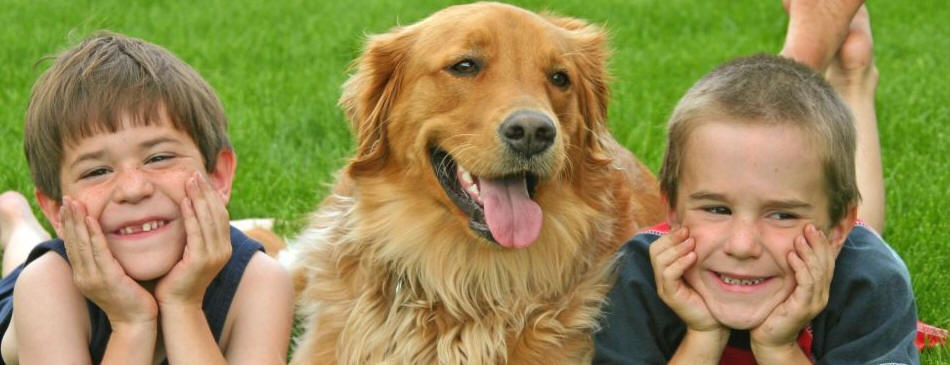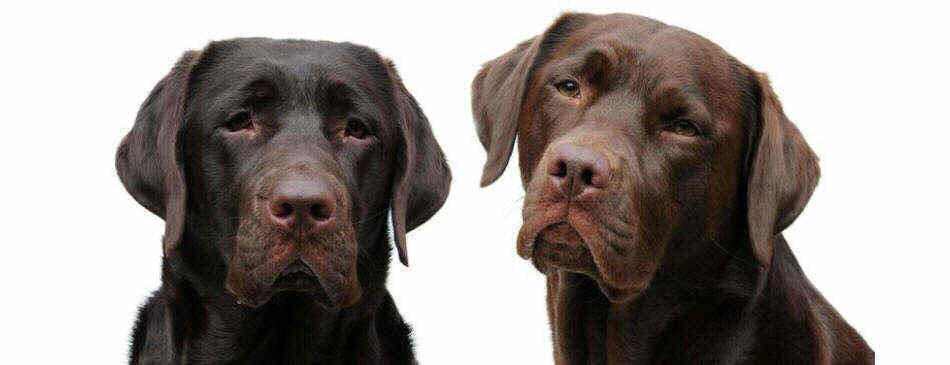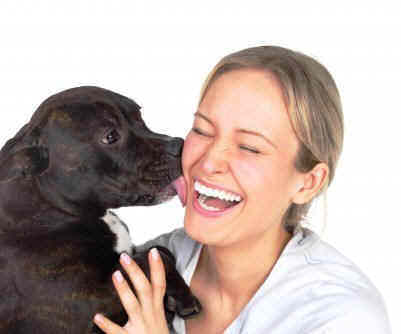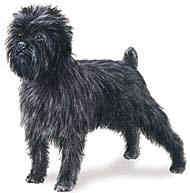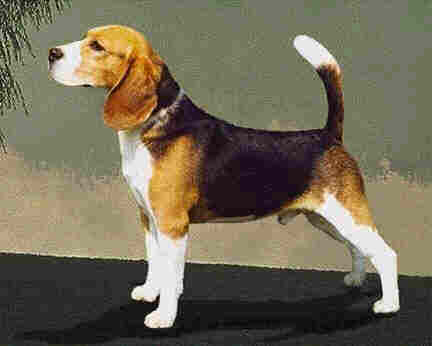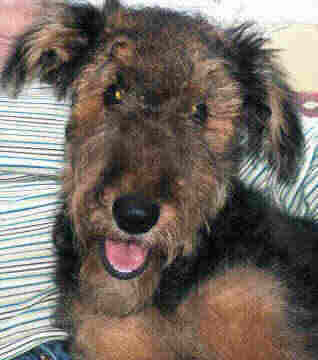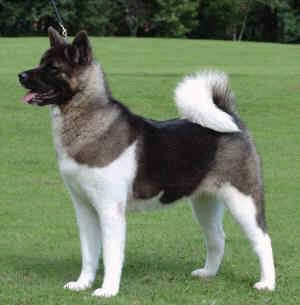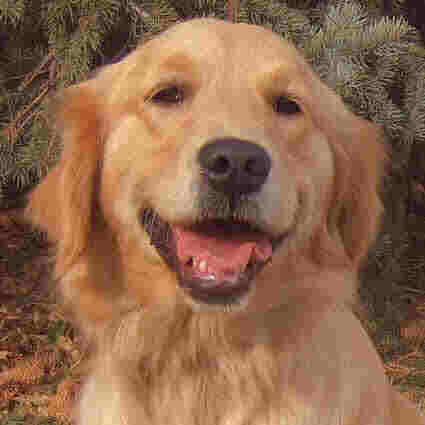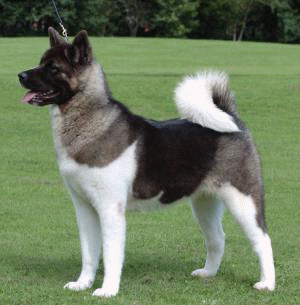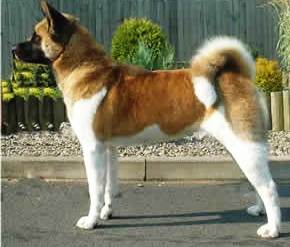|
The Akita is native to the
island of Honshu in the region of Akita in Japan, where it has
remained unchanged for centuries. Today, the Akita is considered the
national dog of Japan and is designated as a Natural Monument. The
breed has had many uses, first as an Imperial guard dog, then as a
fighting dog, hunter of
deer and
bear, for sledding, and for police,
army and guard work. The Akita has keen hunting abilities and can
even hunt in deep snow. He has a soft mouth, so he is suitable for
waterfowl retrieval. In Japan, small statues of the Akita are often
sent to ill people to express a wish for their speedy recovery, and
to parents of newborn children to symbolize health. The first Akita
was brought to the USA by Helen Keller. American servicemen also
brought Akitas to the US after World War II. The Akita was
registered with the AKC in 1972.
General Appearance
Akita's are large, powerful, and alert dogs, with much substance and
heavy bone. The Akita is slightly longer than he is tall with a
broad, deep chest and level back. The broad head, forming a blunt
triangle, with deep muzzle, small eyes and erect ears carried
forward in line with back of neck, is characteristic of the breed.
The tail is carried high and curled over the back. The Akita has
webbed, cat-like feet - which makes it a fine swimmer. The double
coat is composed of a harsh, waterproof outer coat insulated with a
thick, soft undercoat. Coat colors are pure white, red, sesame and
brindle. The colors should be without clear borders. These
dogs may also have a mask or blaze on the face, although not all
Akitas have this. Although the grooming requirements for this breed
are not overly high - to be done on a weekly basis - these dogs can
be heavy seasonal shedders, and are therefore not best suited to
those with allergies.
Temperament
The Akita is docile, intelligent, courageous and fearless. Careful
and very affectionate with its family. Sometimes spontaneous, it
needs a firm, confident, consistent pack leader. Without it the dog
will be very willful and may become very aggressive to other dogs
and animals. A very dignified and devoted dog, the Akita is a
powerful and protective pet that makes for a great watchdog. The
Akita is a first class guard dog. Japanese mothers would often leave
their children in the family Akita's care. This is an
independent and often strong willed breed, and this can make
training difficult. However, this is also a dog that enjoys playing
in the colder weather, although his exercise needs are by no means
excessive. When it comes to other pets, the Akita can be dog
aggressive with dogs of the same sex, and may also be aggressive
around others smaller animals. This is a breed that is usually fine
with children that live in household, but can be protective when
other children are around and can also be aloof and stand offish
with strangers.
Grooming
The
coarse, stiff, short-haired coat needs significant grooming. You
will need to groom the Akita once a week, and in order to keep his
coat in good condition you should use a grooming rake or pin brush.
Akita dogs do not need to be trimmed or shaved. They do, however,
"blow" coat which means that their undercoats shed completely. This
breed sheds heavily twice a year, and therefore grooming may need to
be stepped up during this period. It is good to know that this
period typically only lasts a few weeks. In addition, when
your Akita is shedding brushing its coat on a daily basis is
recommended in addition to using an undercoat rake. Akita dogs that
live indoors or cooler climates typically shed less. Brush with a
firm bristle brush, and bathe only when absolutely necessary as
bathing removes the natural waterproofing of the coat.
Health Problems and Life Expectancy
The life expectancy of the Akita is around 10-13 years. There are a
number of health problems to look out for with this breed, and this
includes luxating patella, thyroid problems, lupus, cancer,
PRA, skin conditions, and autoimmune problems.
Activity Level
While it is a subjective matter as to how much exercise the Akita
needs, having a large yard with a fence is considered the ideal
living situation for this type of dog. Akita dogs are strong and can
typically, easily handle sledding and weight pulling activities.
Akita dogs love to jump, run and play when they want to. An Akita is
an ideal hiking or walking dog and they are large and sturdy enough
to handle even very difficult and challenging terrain. They are also
very willing to play with kids and run and explore all day. A well
exercised and fit Akita is calm and docile in the house and will
typically not engage in any kind of destructive behavior, but they
do need regular, lengthy exercise periods per day if kept indoors.
Akitas, like any other dog, like to have a variety of options for
exercise and not just complete the same routine everyday. While they
are excellent swimmers they sometimes have to be coaxed into the
water at least the first few times, but will soon enjoy a refreshing
swim or paddle about on a hot day.
|


